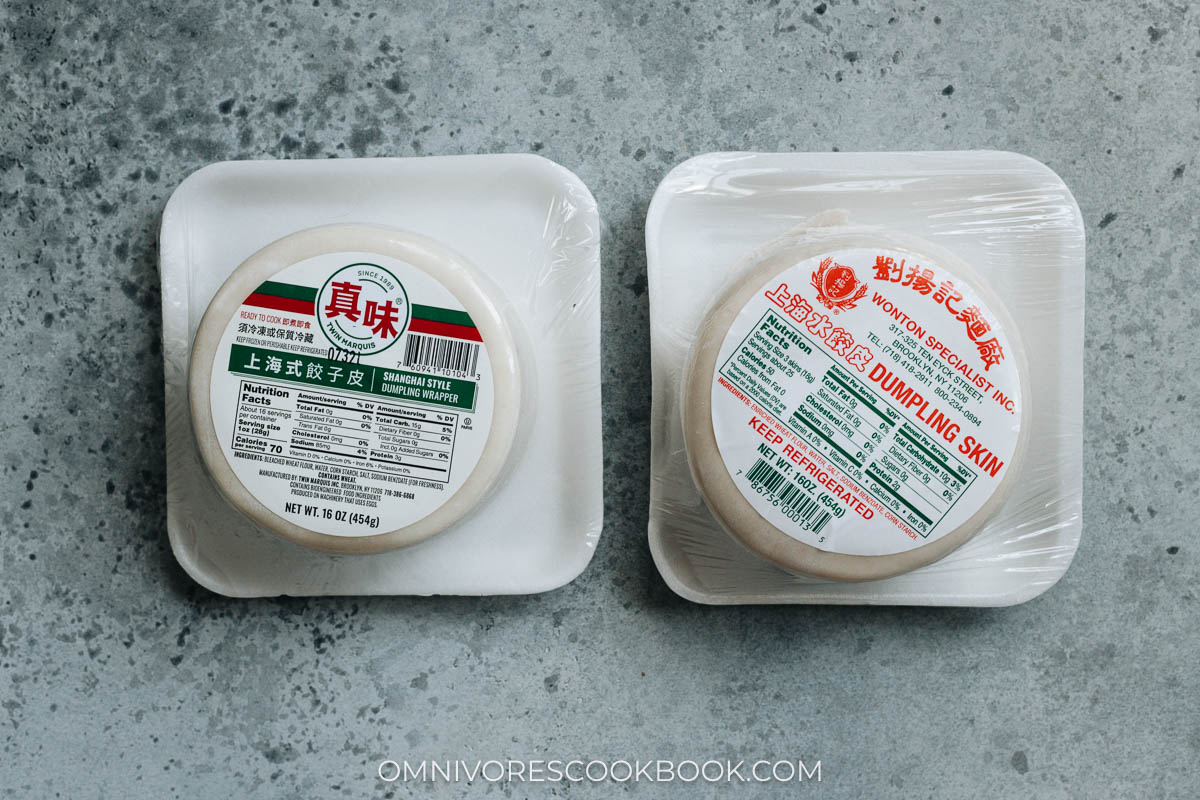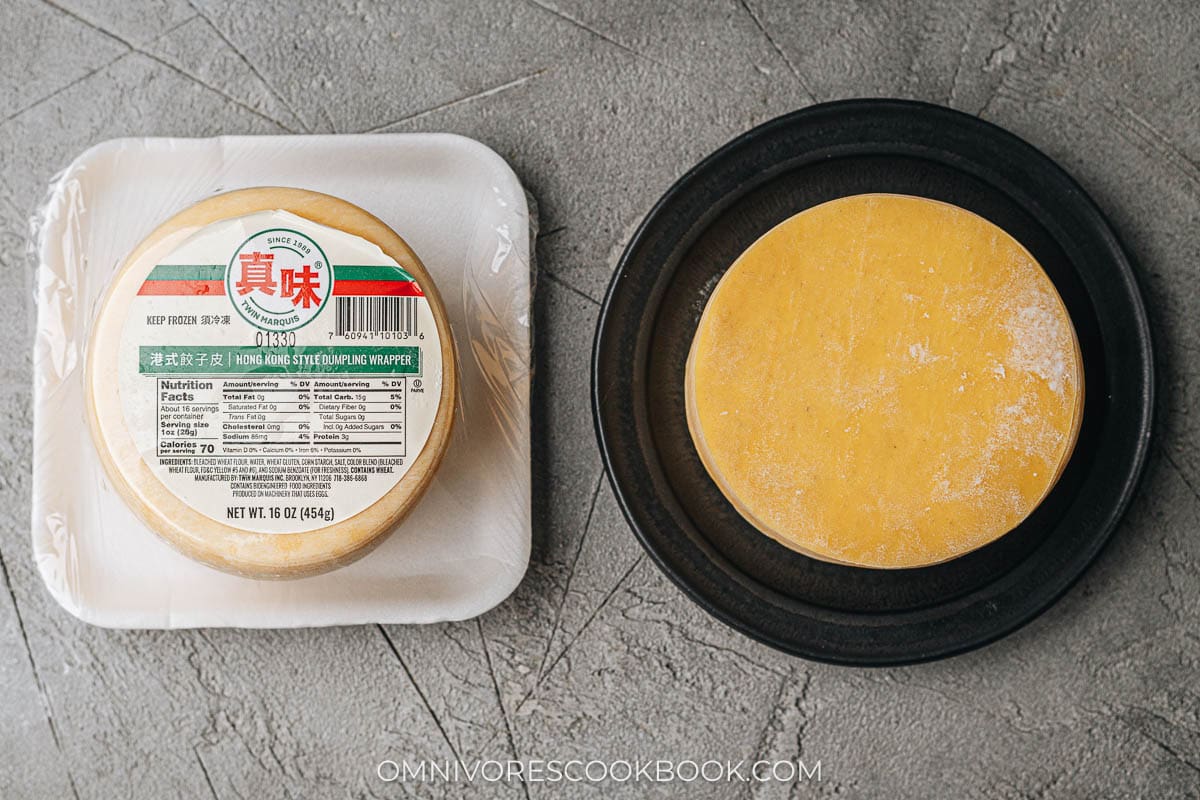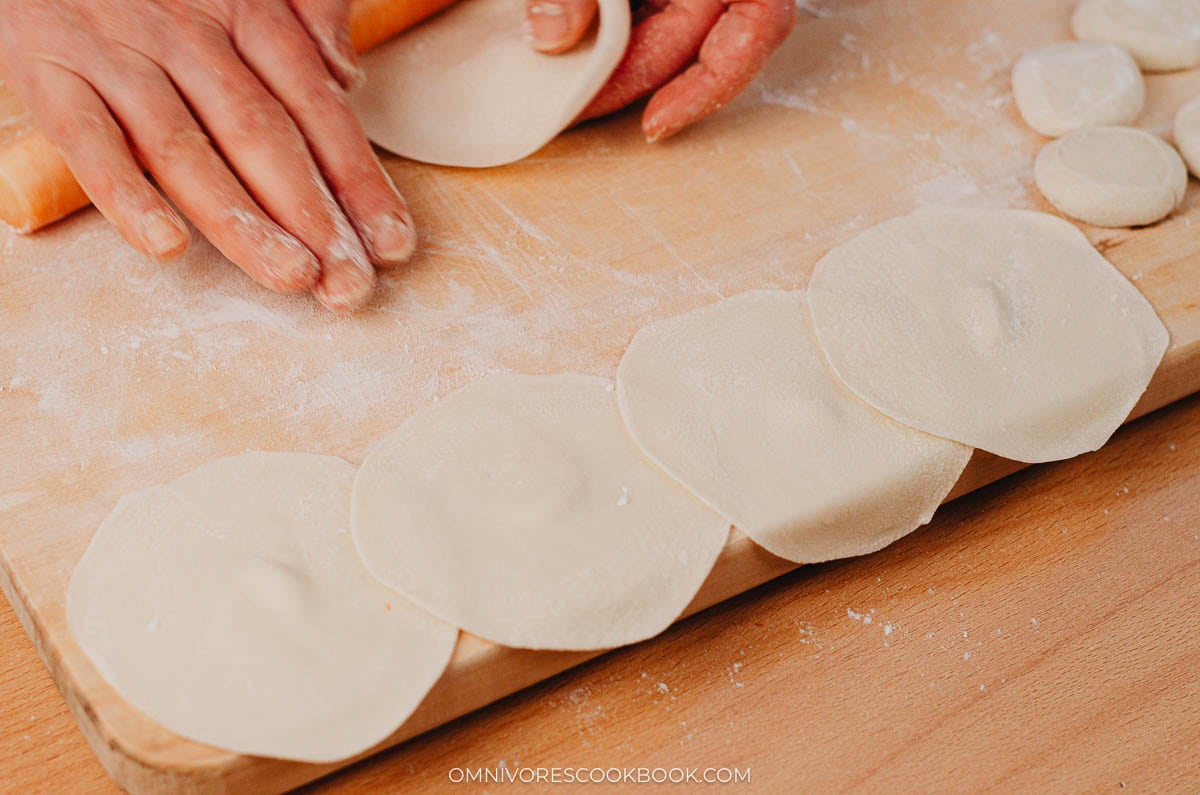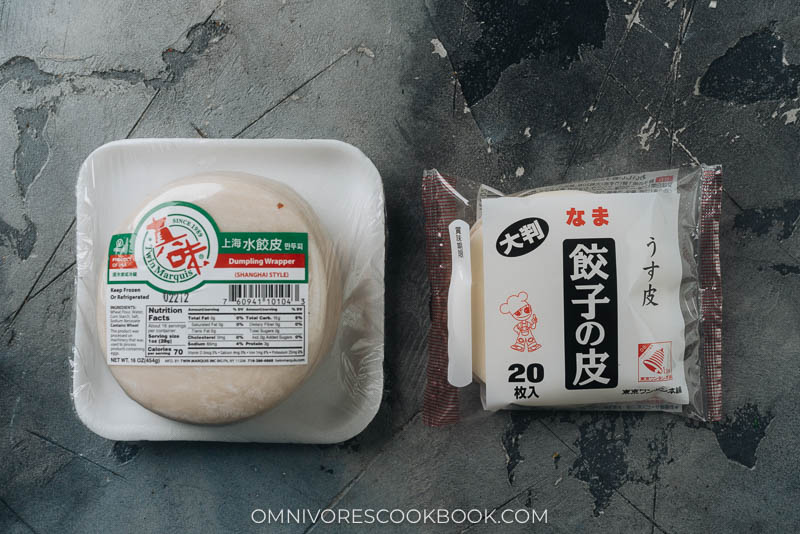
Table of contents
What are Dumpling Wrappers?
Dumpling wrappers (饺子皮) are thin, round sheets of dough made mostly from wheat flour and water. But in some recipes or storebought wrappers, they also include salt or a bit of starch to adjust the texture. These wrappers are the base for a variety of dumplings across China, whether steamed, boiled, or pan-fried.
What Does a Dumpling Wrapper Taste Like?
On their own, dumpling wrappers have a mild, slightly floury taste. The texture varies depending on the type of wrapper and how it’s made. Some are thin and delicate in taste, while others are thicker and more doughy. On the other hand, homemade wrappers have a different texture altogether. They’re often softer yet chewier.
Usage
There are many ways to use dumpling wrappers in Chinese cooking. According to the cooking method, usually different types of dumpling wrappers are used:
- Boiled Dumplings (水饺): They’re cooked in hot water until tender and are often served with dipping sauce. This is the most common way of serving dumplings in China, especially northern China.
- Steamed Dumplings (蒸饺): These dumplings are usually slightly bigger in size, usually mixed with a combination of meat and vegetables, often heavy on the vegetables.
- Potstickers (锅贴): These pan-fried dumplings have crispy bottoms and soft, juicy centers. Sometimes, uncooked dumplings are pan fried, then steamed to make potstickers. Other times, leftover boiled dumplings are pan fried to make potstickers.
NOTE: Some dishes such as soup dumplings and har gow (Cantonese shrimp dumplings) have to use specialized wrappers that are usually made from scratch. The store-bought dumpling wrappers are not suitable for use in those dishes.
Different Types of Dumpling Wrappers
- Shanghai-Style Dumpling Wrappers
These are round, white, and thick wrappers that are slightly larger in size. The main ingredients are wheat and water. They are great for boiled dumplings, because they hold together very well. They are also suitable for steamed or pan fried dumplings. Due to the thicker texture, they can hold fillings with more vegetables without getting soggy.

- Hong Kong-Style Dumpling Wrappers
They are thin and yellow, slightly smaller in size. These wrappers are more delicate and usually used for shumai, a type of open-faced steamed dumpling, or pan fried dumplings.

- Homemade Dumpling Wrappers
This is the most common way of making dumplings in China. We use cold water dough dumpling wrappers for boiled dumplings. And hot water dough dumpling wrappers for steamed and pan fried dumplings. Homemade dumpling wrappers are more pliable so they’re easier to wrap with bigger fillings. They also tend to have a better, chewier texture than store-bought wrappers.

How To Shop
You can find dumpling wrappers at Chinese markets, or at stores like H Mart or 99 Ranch Market in the U.S. They are often stored in the refrigerated or freezer section.
When making Chinese dumplings, get bigger sized round wrappers if possible, for the best texture. It is possible to use gyoza wrappers as well, which are for Japanese pan fried dumplings. But be aware that they are usually much smaller and thinner, creating a different texture. Gyoza wrappers are not suitable for steamed or boiled dumplings due to their delicate texture.

How To Store
Unopened
- Freezer: The best way to store dumpling wrappers is in the freezer. They usually stay good for at least 3 months, sometimes longer, depending on the packaging.
- Fridge: If the package is still sealed, you can keep it in the fridge for 1 week or so.
Opened
Once you’ve opened the pack, try to use the wrappers as soon as possible. Once opened, the wrappers will start drying out and will become difficult to wrap over time.
- Fridge: You can store the unused wrappers in an airtight container or ziplock bag in the fridge for 1 to 2 days.
- Freezer: To freeze opened wrappers, wrap them tightly with plastic wrap, place them in a ziplock bag, and squeeze out as much air as possible before sealing. Freezer storage prevents the wrappers from drying out fast, but you should still try to use them as soon as you can, within a month.
FAQs
1. Why won’t my dumpling wrappers stick?
If the edges aren’t sealing, try wetting them lightly with water before pressing them together. This helps create a better seal.
2. Can I freeze dumplings?
Yes! You can freeze wrapped and uncooked dumplings, or cooked leftovers. Freeze uncooked dumplings on a tray without overlapping before transferring them to a container or freezer bag. Cook by steaming or pan-frying.
3. How do I prevent my dumplings from breaking?
Make sure the wrappers aren’t too dry or overfilled. Also, handle them gently while cooking. Using fresh, pliable wrappers helps a lot too. For boiled dumplings, make sure to use the Shanghai style wrappers, or a type of wrapper that’s designed for boiled dumplings.
5. Why are my dumpling wrappers tearing?
Wrappers may tear if they’re too dry, too thin, or overfilled. Try covering unused wrappers with a damp towel to keep them from drying out, and handle them gently when folding and sealing.
Recipes
- Pork and Chive Dumplings (猪肉韭菜水饺): A Northern Chinese favorite. Juicy pork mixed with fragrant garlic chives, boiled until perfectly tender.
- Mom’s Best Pork Dumplings: My mom’s secret recipe for creating the best pork dumplings.
- Pork and Sauerkraut Dumplings (酸菜饺子): Introducing Northern Chinese pork and sauerkraut dumplings that have a savory, fragrant, juicy filling and a crispy crust.
- Mom’s Best Lamb Dumplings – A northern Chinese dumpling with a juicy filling made with lamb, zucchini and carrot.
- Carrot Dumplings: A beautiful vegetarian option made with carrots, bamboo shoots, mushrooms, and eggs for a fresh, hearty bite.
- Mom’s Best Lamb Dumplings: Savory lamb seasoned with soy sauce, Sichuan peppercorn, and ginger, balanced with sweet carrot and juicy zucchini.
- Egg and Pepper Dumplings (鸡蛋青椒饺子): These are made with soft scrambled eggs, mushrooms, and green peppers wrapped in crispy dumpling skins. So simple but packed with flavor.
- Homemade Vegan Dumplings (素菜锅贴) – This vegan dumpling filling has a well-balanced texture with veggies, tofu, and vermicelli. It tastes even better than the restaurant version.
- Turkey dumplings (A Thanksgiving Leftover Recipe) – Turn Thanksgiving leftovers into fancy dim sum using this turkey dumpling recipe.
- Nepali Momos with Spinach and Ricotta: A creamy vegetarian twist featuring tender spinach and ricotta cheese wrapped in soft dumpling dough and steamed to perfection.
